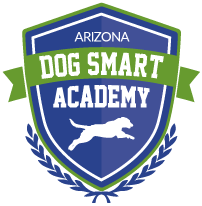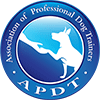Have you ever lost a pet?
Did you know that more pets are lost on or around the Fourth of July than any other time of the year?
Fireworks combined with open windows or doors contribute to many pets escaping and fleeing from the loud noises. Most animals simply run until they tire, but often at this point they are far away from home and are unable to find their way back. Some hunker down and hide and revert to near wild behavior lying low and moving only at night.
The American Humane Association estimates over 10 million dogs and cats are lost or stolen in the U.S. every year. One in every three pets will become lost at some point during their life.
So what do you do if this happens to your dog? First, and most importantly, stay calm. While maintaining your composure may seem the most difficult part; panicking helps no one, least of all your dog. Next, check all around your house to see if your dog is hiding among bushes or behind something. If you have a doggie door, check inside the house including hiding spots like closets or bathrooms. If a door is closed, open it. Many pets have accidentally closed themselves in rooms trying to hide behind doors. Once you have searched your entire house and yard then it’s time to move forward with a plan.
- Don’t jump in the car right away, call or go to your neighbors houses and ask if they saw your dog. If they offer their help, by all means take it. Ask them if they could call any other people in the neighborhood they know.
- If you have a gate to your yard leave it open (unless you have other dogs, then secure them first), just in case your dog finds their way back they can get to somewhere familiar.
- Grab a leash and some treats and walk around your block. Call your dog’s name periodically and listen for the jingle of tags.
- If you finish that trip around the block with no luck, it’s time to call in the cavalry! Get on the phone and call your friends ask them if they will come help. Ask them to bring a leash with them. If anyone says they can’t come but want to help, ask if they would be willing to start making a poster. Send them a recent picture of your pet and whatever phone number you wish to use. You may not need it but at least you’ll have it made.
- Now take another lap around the block, (don’t forget the leash and treats), hopefully your dog heard your voice and may now be looking for you as well!
- Hopefully your friends have started to arrive, if so, discuss a layout of the surrounding area and designate who will go where. Divide and conquer! As hard as it is, you may be better off staying close to home. Where you can be ready if your dog shows up or a friend calls with a sighting.
- If the search lasts more than four hours, then call back that friend and have them finish the poster. If they can print them, great; if not have them email it to you and print off 10 copies per friend and 10 for yourself. Send everyone back to their designated areas and post the signs.
- The hardest part may be waiting, so keep making those laps around the block. Talk to anyone you see out in their yard and show them the poster. Don’t give them away, but let people know you will be putting them up around the neighborhood.
Now the ideal scenario here is that your dog returns home on its own or runs up to someone and they return it to you. But that isn’t everybody’s dog. Many dogs can become shy, even fearful when out in the world, some will even run from people. So a few key rules to remember:
- Tell your friends not to approach the dog but to keep him/her in sight and call you. A nervous dog is more likely to come to its owner than anyone else. If the dog is moving away or is in immediate danger than they can follow the next few steps, but ideally it should be you.
- Whatever you do, DON’T CHASE YOUR DOG! A dog can easily outrun you and you run the risk of your dog running into the street or farther away.
- Make the dog aware of your presence, talk to them and break out that bag of treats. Crinkle the bag, most dogs know that sound and will often come to it. Keep talking in a calm voice and back away from the dog slowly if that helps. This might encourage the dog to come to you. Toss treats as the dog approaches to keep their focus on you. If they hesitate, then sit or lie down and see if they will come in closer. You can also use a favorite toy as well.
- When the dog gets close, DON’T GRAB! If you miss, the dog will most likely not come in again. Reach out slowly and under the dog’s chin to get to the collar. If you can, snap the leash on or slide it through the collar. Most dogs, once on leash will calm down.
- Another trick you might have to try is opening a car door to see if the dog will jump in. Many dogs view the car as a safe haven and will willingly do so. Also, you can see if your dog will follow you into a yard or house if they won’t come to you. If your dog follows, keep moving toward home, avoid busy streets and see if they will gradually come closer along the way.
One very important thing that you can act on right now is to know that “the best defense is always a good offense.” Take the time right now to teach your dog to come when called with lots of rewards! Also, make sure your dog’s tags are updated. If it’s microchipped update that information as well.



